by Naomi L. | August 24, 2016 | Blog, Creative Writing, Featured |
No Man’s Sky came out this month, ending a three-year wait for the biggest space exploration game ever made. Published by indie studio Hello Games for PlayStation and PC, the game is set in a massive open universe (read: 18 quintillion planets) that procedurally generates almost everything from star systems and planets to the alien lifeforms that occupy them. I haven’t played it myself yet, but I have been watching someone else play, and if nothing else, it’s definitely creative and makes for great artistic inspiration, in no small part for its representation of the endless possibilities in space.

So today, I’d like to dedicate this creative writing post to that someone special who keeps on inspiring me with his passion for space. There’s a lot of creative inspiration to be found out there in the Universe, so let’s explore! Enjoy!
Tales in the Sky
Since the time of ancient civilizations, human beings have been fascinated with the stars and the mysteries hidden among them. Early cultures associated celestial bodies with divine beings and used the study of the stars to understand the phenomena of Earth, making astronomy the oldest natural science in history. Constellations have been a big part of mythology and storytelling throughout much of history, while modern science continues to make a splash in nonfiction by unraveling the great mysteries of the Universe. Whether you’re an artist or a scientist, there’s always something exciting to find in the cosmos!

The twelve signs of the Zodiac
The stars have always inspired me with their mysterious beauty. Sometimes when I’m feeling starved for creative inspiration on a clear night, I like to look outside at the sky and get lost in daydreams (nightdreams?) about space and all the amazing things that could be waiting out there in the Universe. I’m fortunate to live in a suburban area where there’s a good view of the stars at night (not as perfect as in unpopulated deserts, of course, but much better than in big cities), so I’ve had many opportunities to enjoy open skies with countless stars and bright moons, which often make excellent inspiration for poetry. So beautiful!
Stargazing is extremely relaxing, and an excellent practice for artists who either need inspiration to overcome a creative block or simply want to unwind after a busy and tiring day. If you’re lucky enough to live in an area without too much light pollution, I recommend taking the occasional break in the evening just to gaze up at the night sky. You may find it’s exactly what you need to spark your creativity!
“To Infinity and Beyond” / “It Came From Outer Space”
Mention “science fiction” and the first images that come to mind are usually alien lifeforms, spaceships, distant planets, and intergalactic exploration. With its continuing popularity from the old Star Trek series to the new Star Wars films and beyond, outer space often seems to be the poster child of the genre, and it remains one of the most well-known themes of science fiction today.
Science fiction is one of my favorite genres, and some of my favorite sci-fi stories use space travel as a major theme. Films like Interstellar and The Martian fascinated me with their use of real science to tell amazing stories, while The Force Awakens blew me away with its creative and exciting contributions to a classic sci-fi saga. A couple of the reasons I love science fiction are its infinite possibilities and its power to reconcile science and art, and some of the best examples of science fiction stories encompassing both these points are the ones with themes related to outer space.
Naturally, space-themed stories don’t always have to involve traveling outside Earth; sometimes it’s fun to imagine what would happen if space came to us instead. Alien invasions are another popular theme and often come up in lists of science fiction writing prompts. Outer space also contains plenty of dangers that could threaten life on Earth, making it a great source of inspiration for apocalyptic and post-apocalyptic fiction as well. There’s no end to the strange things that could come from outer space; the only limit is the imagination!
With all the writing ideas it provides, it’s no surprise that space is such a popular theme in science fiction. After all, why limit your stories to Earth when there’s an entire universe out there to explore?
Exploration Beyond Earth
Circling back to the introductory topic, I’ve been watching my boyfriend play a lot of No Man’s Sky lately, and I have to say it’s been quite an interesting journey so far. Mixed reviews aside (because of course there was “too much hype” around it), the game does offer a relaxing atmosphere in which creative introverts like my boyfriend and me could easily get lost for hours. We’ve enjoyed discovering different kinds of planets and especially naming the strange creatures we find together, which has turned out to be a great exercise for me as a sci-fi/fantasy writer. Maybe I’ll even use some of those alien names for a future novel!
While it may not be everything it supposedly promised to be, my impression is that part of the appeal of a game like No Man’s Sky must come from a fascination with space in general and its infinite potential stories. These don’t have to be entirely fictional, of course; another game my boyfriend loves is Elite: Dangerous, a space exploration game which, despite being set over a thousand years in the future, is heavily based on the real Milky Way galaxy, even containing a handful of real star systems alongside the procedurally generated ones. He loves how relaxing it is to explore deep space alone, and in a 1:1 scale open world galaxy, he’ll never run out of space to discover!
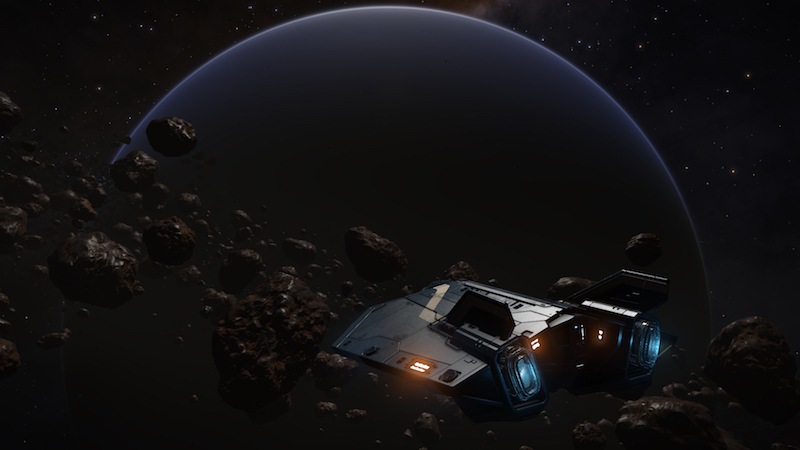
Elite: Dangerous screenshot taken by my boyfriend
From constellation mythology to science fiction to astronomy, space is full of inspiration for creative writing. Whether you’re a poet seeking that perfect verse in the stars or a speculative fiction writer doing research for your new novel, your next spark of creativity could be waiting for you among the stars. So the next time you find yourself at a creative block, why not take a break to explore the stories in the Universe? It’s the only other source of inspiration as infinite and boundless as the human imagination!
What about you? How do you find creative inspiration in space? Have you ever incorporated elements of space in your writing?
by Naomi L. | November 18, 2015 | Blog, Creative Writing |
When it comes to seeking inspiration for your fictional characters, there’s no better place to find it than in the people you know in real life (a point I’ve already made in another post I wrote last year). Such was the case of many famous authors, whose characters were inspired by the real people in their lives. Writers are often motivated by such figures as teachers, close friends, and comrades-in-arms, and sometimes these people make enough of a lasting impression to earn a full fictional counterpart in a book.
So for a little more inspiration heading into the second half of your NaNoWriMo journey, here’s an infographic put together by Fresh Essays highlighting the most interesting examples of well-known fictional characters based on real people. Enjoy!

Are any of your characters based on people you know in real life? What are your favorite examples of characters based on real people?
Today’s creative writing post is brought to you by Fresh Essays, a professional custom essay writing service. For more information, visit http://www.freshessays.com. Thanks for reading! Happy writing!
by Naomi L. | November 4, 2015 | Blog, Creative Writing |
It’s the first week of National Novel Writing Month, and you know what that means: time to finally sit down and write that novel! Of course, this is much easier said than done, but hammering out 50,000 words in 30 days, daunting as it may seem, is certainly possible. Sometimes all you need to get started on reaching that goal is a bit of motivation.
So to help start you off on your NaNoWriMo journey, here are 10 tips on writing in the form of inspirational quotes from famous authors. Enjoy, and best of luck in this year’s NaNoWriMo!
 1) Be ruthless about protecting writing days, i.e. do not cave in to endless requests to have “essential” and “long overdue” meetings on those days. – J.K. Rowling
1) Be ruthless about protecting writing days, i.e. do not cave in to endless requests to have “essential” and “long overdue” meetings on those days. – J.K. Rowling
2) If you don’t have time to read, you don’t have the time (or the tools) to write. Simple as that. – Stephen King
3) This is how you do it: you sit down at the keyboard and you put one word after another until it’s done. It’s that easy, and that hard. – Neil Gaiman
4) No tears in the writer, no tears in the reader. No surprise in the writer, no surprise in the reader. – Robert Frost
5) The best time for planning a book is while you’re doing the dishes. – Agatha Christie
6) Substitute ‘damn’ every time you’re inclined to write ‘very’; your editor will delete it and the writing will be just as it should be. – Mark Twain
7) Don’t tell me the moon is shining; show me the glint of light on broken glass. – Anton Chekhov
8) There is nothing to writing. All you do is sit down at a typewriter and bleed. – Ernest Hemingway
9) You must stay drunk on writing so reality cannot destroy you. – Ray Bradbury
10) If there’s a book that you want to read, but it hasn’t been written yet, then you must write it. – Toni Morrison
What are your thoughts on these inspirational writing quotes? Any other favorites you would add to this list?
by Naomi L. | October 7, 2015 | Blog, Creative Writing, Off The Bookshelf |
I know it’s been a while since I’ve shared a book on my Off The Bookshelf segment, so this week, I’m going to discuss one of my favorites. I’ve talked about this famous story in depth a few times before, notably to discuss five points that are often missed and the reasons why it’s a greater story than many people think. Once again, I’d like to revisit this classic tale of forbidden love, this time in a double dose. I hope you’ll enjoy this review of one of my favorite books off my shelf: Romeo & Juliet/West Side Story.

Romeo & Juliet/West Side Story
Summary
First published in 1965, Romeo & Juliet/West Side Story comprises two stories in one: the stage play Romeo & Juliet by William Shakespeare; and the 1957 Broadway musical West Side Story by Arthur Laurents. The book also includes explanatory notes for unfamiliar expressions in Shakespeare’s play and a foreword by renowned theater director Norris Houghton.
Romeo & Juliet tells the story of two teenagers in Renaissance Verona who fall in love despite the age-old feud between their families, but who are driven to an untimely end by fate and the violent circumstances surrounding them. Inspired by Shakespeare’s play, West Side Story tells the same tragic tale of a doomed romance between young lovers, but updates the setting to modern-day New York and the protagonists to a white American boy and a Puerto-Rican girl torn apart by the racism-fueled rivalry between the street gangs with which they’re associated. As much for Romeo and Juliet as for Tony and Maria, love blossoms at first sight and against the odds, only to be threatened and destroyed by hatred that brings tragedy not just to the young lovers, but to their war-torn society as a whole.
Review
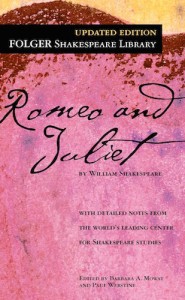 I first read this book as a teenager, shortly after watching the 1961 movie West Side Story as homework for singing lessons (I was to sing “Somewhere” at my first presentation). Long familiar with the plot of the original play, I had fallen in love with the story of forbidden romance and was eager to finally read Shakespeare’s timeless classic for myself. Of course, I’ve made my love for the story itself abundantly clear in the past, so this review will focus a little more on the format of this book than on the pieces within it.
I first read this book as a teenager, shortly after watching the 1961 movie West Side Story as homework for singing lessons (I was to sing “Somewhere” at my first presentation). Long familiar with the plot of the original play, I had fallen in love with the story of forbidden romance and was eager to finally read Shakespeare’s timeless classic for myself. Of course, I’ve made my love for the story itself abundantly clear in the past, so this review will focus a little more on the format of this book than on the pieces within it.
What I find most interesting about this particular book is the way the same story is presented over two very different backdrops: one in Renaissance Italy, the other in 1950s New York. By combining both stories into one volume, Romeo & Juliet/West Side Story offers a unique way to visualize the tale of star-crossed young love across time. The similarities and differences between these popular pieces become clearer as the reader is able to quickly swap a scene in one play for its parallel in the other: the feud between the Montagues and the Capulets becomes a turf war between the Jets and the Sharks, the Capulet ball becomes the dance at the gym, the poetic exchange at Juliet’s balcony becomes a duet on Maria’s fire escape. Each story is beautiful in its own right, but I’ve found that to be able to compare and contrast them so easily makes the fundamental plot all the more fascinating.
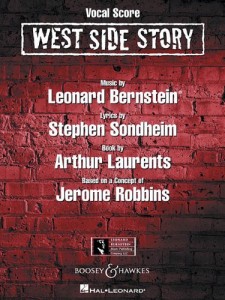 Romeo & Juliet was the first Shakespearean play I ever read, so naturally I was yet unfamiliar with Elizabethan English. This is where the notes in the back of the book came in extremely handy. Essential words and terms are referenced to the line with modern English translations and explanations wherever necessary, so the notes were a tremendous help when it came to deciphering the meanings within Shakespeare’s verse. It’s worth noting that they’re still helpful to any new reader who plans to read more of Shakespeare, as several of the expressions used in Romeo & Juliet commonly appear in his other works. Unfortunately, a similar device isn’t available for West Side Story, which relies on its readers’ familiarity with the music to be fully enjoyable, but this is merely a minor drawback to what is otherwise an equally stunning theatrical masterpiece.
Romeo & Juliet was the first Shakespearean play I ever read, so naturally I was yet unfamiliar with Elizabethan English. This is where the notes in the back of the book came in extremely handy. Essential words and terms are referenced to the line with modern English translations and explanations wherever necessary, so the notes were a tremendous help when it came to deciphering the meanings within Shakespeare’s verse. It’s worth noting that they’re still helpful to any new reader who plans to read more of Shakespeare, as several of the expressions used in Romeo & Juliet commonly appear in his other works. Unfortunately, a similar device isn’t available for West Side Story, which relies on its readers’ familiarity with the music to be fully enjoyable, but this is merely a minor drawback to what is otherwise an equally stunning theatrical masterpiece.
Both Romeo & Juliet and West Side Story have had a profound impact on audiences: one for its poetic deconstruction of romantic ideals, the other for its dramatic commentary on the consequences of social intolerance. The presentation of both plays in one volume brings to light the true timelessness of Shakespeare’s classic, proving that the story of love born against hate will be forever relevant as long as people and society continue to be powerfully motivated by both.
Inspiration
Romeo & Juliet is the archetype of forbidden love thwarted by circumstance, so it’s no wonder the story has translated so well into the modern setting of West Side Story. Whether set between feuding families or warring street gangs, this tragic love story reads not only as the epitome of the passion and dangers of young romance, but as a lesson on how hatred kills. Perhaps for its universal themes of love, intolerance, and the cruelty of fate, the plight of the star-crossed lovers is a tale that has fascinated readers for centuries and certainly will for many more to come. It has served as inspiration for much of my romantic fiction, and to this day I indulge in it whenever I feel the need to satisfy my cravings for drama and romance.
For all the above reasons and more, Romeo & Juliet is and likely always will be my favorite story at its core, regardless of the characters, settings, and details that flesh it out. To be able to enjoy my two favorite versions of the story in a single volume is simply the cherry on top of a classic poetic delight.
by Naomi L. | June 24, 2015 | Blog, Creative Writing |
When it comes to creative writing, there are plenty of sources of inspiration out there. Several of them have been featured here on my blog, from books to music to video games. But one particularly beautiful source of inspiration that I have yet to discuss is visual art.
So today, I’d like to explore the inspiration that visual works of art can provide for creative writing. How can art composed of images become fruit for art composed of words? Enjoy!
Worth a Thousand Ideas
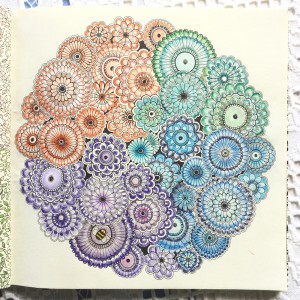 Visual art is arguably the “most universal” art medium. It comes in many forms: drawings, paintings, photography, sculptures, etc. They can come in a vast array of colors or a monochromatic spectrum from black to white. They can be amateur pieces created for fun or professional-quality works on display in the finest galleries in the world. But one thing they all have in common is that they were each born from an idea. If you think about it, doesn’t that make them a sort of “writing with images”?
Visual art is arguably the “most universal” art medium. It comes in many forms: drawings, paintings, photography, sculptures, etc. They can come in a vast array of colors or a monochromatic spectrum from black to white. They can be amateur pieces created for fun or professional-quality works on display in the finest galleries in the world. But one thing they all have in common is that they were each born from an idea. If you think about it, doesn’t that make them a sort of “writing with images”?
Similar to creative writing, a work of visual art can start as one idea that grows into a whole network of connected thoughts, stories, possibilities, all waiting to be discovered by the artist’s audience. These can prove especially inspirational to writers, as the quality of our work relies on our ability to create images in our readers’ minds the same way that visual artists create images for their viewers’ eyes. So the next time you feel stuck in your writing, why not try to draw ideas from the beauty within a visual piece?
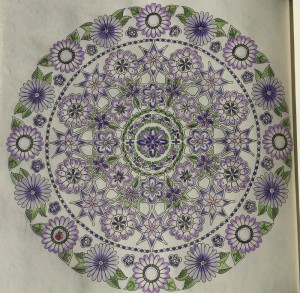 Gaze into the Mona Lisa‘s eyes and try to imagine what she’s thinking. Mentally reassemble the shapes of an abstract work into something concrete. Improvise a scene based on your favorite photograph. Write a poem based on the emotions evoked by the colors in a classic painting. If a picture is worth a thousand words, then challenge yourself to see how many of them you can fit into a story. You never know what ideas may be hidden in a visual work until you look for them!
Gaze into the Mona Lisa‘s eyes and try to imagine what she’s thinking. Mentally reassemble the shapes of an abstract work into something concrete. Improvise a scene based on your favorite photograph. Write a poem based on the emotions evoked by the colors in a classic painting. If a picture is worth a thousand words, then challenge yourself to see how many of them you can fit into a story. You never know what ideas may be hidden in a visual work until you look for them!
Visual art is a beautiful means of expression that can spark all sorts of other wonderful forms of art. Just a brief look is often enough to get our creativity flowing. But what happens when you create visual art yourself?
From Drawings to Words
When I was in high school, I would sometimes find my mind wandering in the middle of class. To pass the time, I would draw the occasional doodle in my textbook. Most of these drawings consisted of wings, dolphins, and horses, with a wolf and a tiger thrown into the mix for good measure. I’ll be the first to admit that they weren’t very good, but those drawings, however distracting they were from schoolwork, actually taught me a few interesting things about myself: I love animals, I love movement, and I wish I could fly. And from then on, I applied all those facts to my writing.
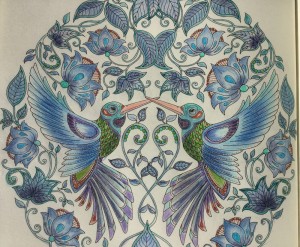 If you were to look back through all the Friday posts on my blog, you’d probably notice that most of my stories feature animals and other non-human characters. I’ve written a poem about what I would do if I had wings, and one of my most popular creative writing posts is about how to write for animal characters. Even a look through my novel ideas would reveal a pattern of bird motifs. Though drawing was never my strong suit, it did give me plenty of ideas for my creative writing, and for that I’ll always appreciate it as one of the many invaluable sources of inspiration for my true artistic passion.
If you were to look back through all the Friday posts on my blog, you’d probably notice that most of my stories feature animals and other non-human characters. I’ve written a poem about what I would do if I had wings, and one of my most popular creative writing posts is about how to write for animal characters. Even a look through my novel ideas would reveal a pattern of bird motifs. Though drawing was never my strong suit, it did give me plenty of ideas for my creative writing, and for that I’ll always appreciate it as one of the many invaluable sources of inspiration for my true artistic passion.
So even if it’s not your forte, I strongly recommend giving visual art a chance. Draw, paint, take photos, anything that can jumpstart the creative part of your mind. The ideas you find in your art may become the inspiration for your next big written work. And if you’re lucky, you may discover something beautiful about yourself along the way. Good luck, and thanks for reading!

Today’s post is dedicated to my grandmother, whose lovely work in Johanna Basford’s Secret Garden coloring book served as the illustrations for this article. Happy Birthday, Grandma! I love you!

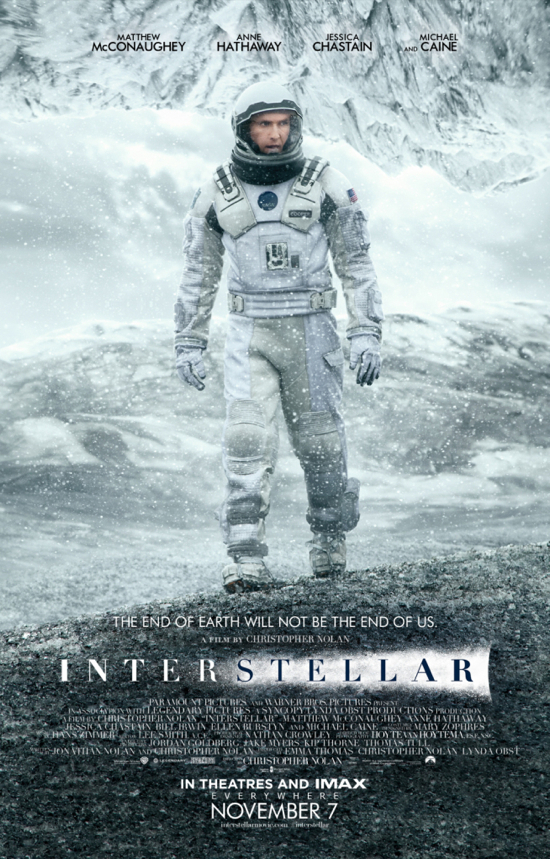








 Visual art is arguably the “most universal” art medium. It comes in many forms: drawings, paintings, photography, sculptures, etc. They can come in a
Visual art is arguably the “most universal” art medium. It comes in many forms: drawings, paintings, photography, sculptures, etc. They can come in a  Gaze into the
Gaze into the  If you were to look back through all the Friday posts on my blog, you’d probably notice that most of my stories feature animals and other non-human characters. I’ve written a poem about what I would do if I had wings, and one of my most popular creative writing posts is about how to write for animal characters. Even a look through my novel ideas would reveal a pattern of bird motifs. Though drawing was never my strong suit, it did give me plenty of ideas for my creative writing, and for that I’ll always appreciate it as one of the many invaluable sources of inspiration for my true artistic passion.
If you were to look back through all the Friday posts on my blog, you’d probably notice that most of my stories feature animals and other non-human characters. I’ve written a poem about what I would do if I had wings, and one of my most popular creative writing posts is about how to write for animal characters. Even a look through my novel ideas would reveal a pattern of bird motifs. Though drawing was never my strong suit, it did give me plenty of ideas for my creative writing, and for that I’ll always appreciate it as one of the many invaluable sources of inspiration for my true artistic passion.

Recent Comments